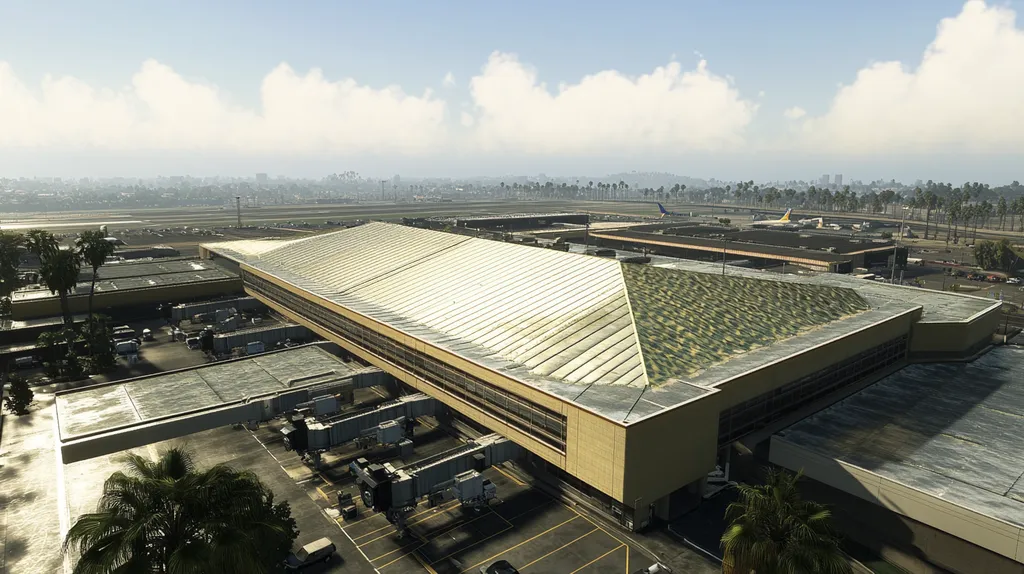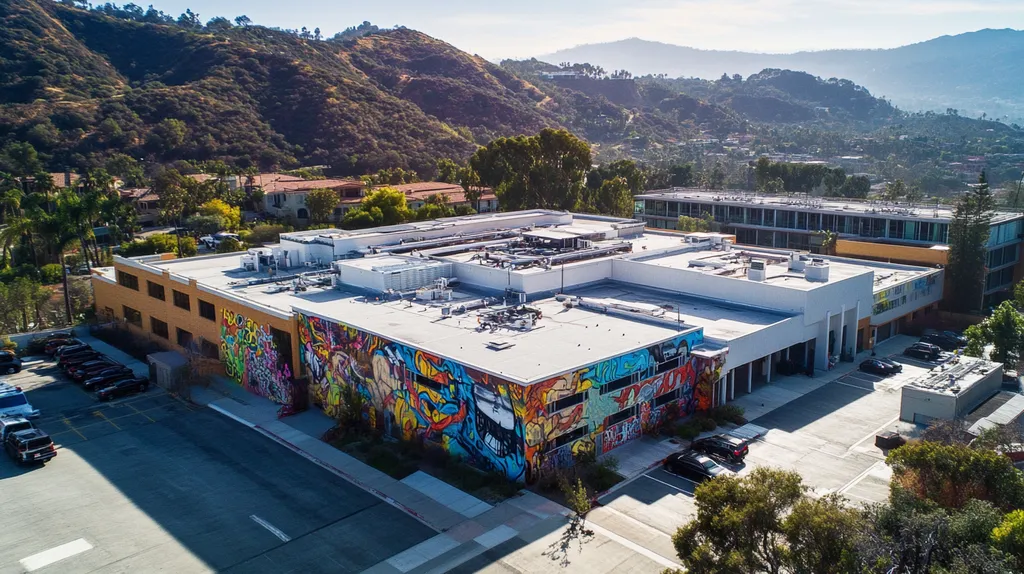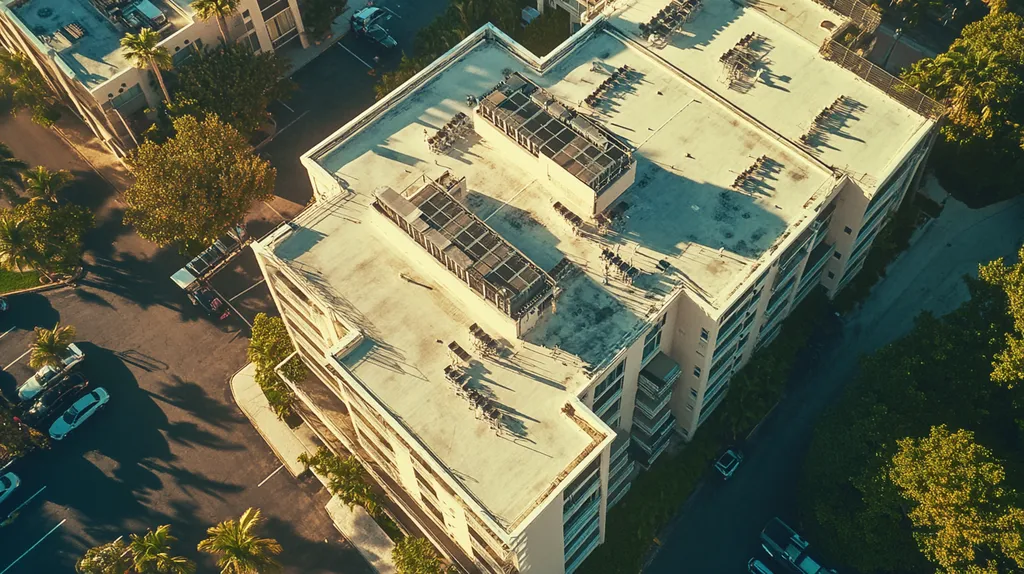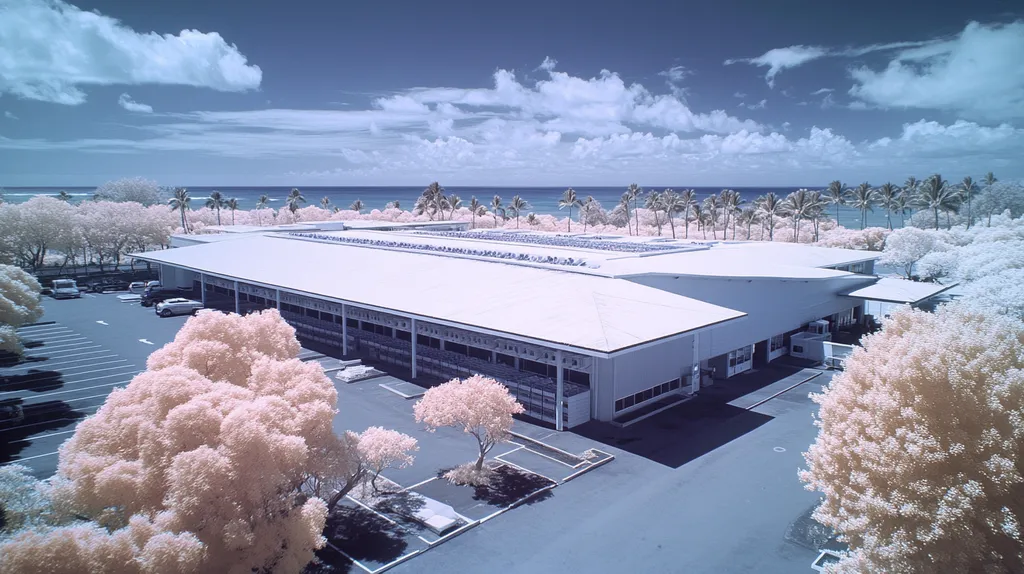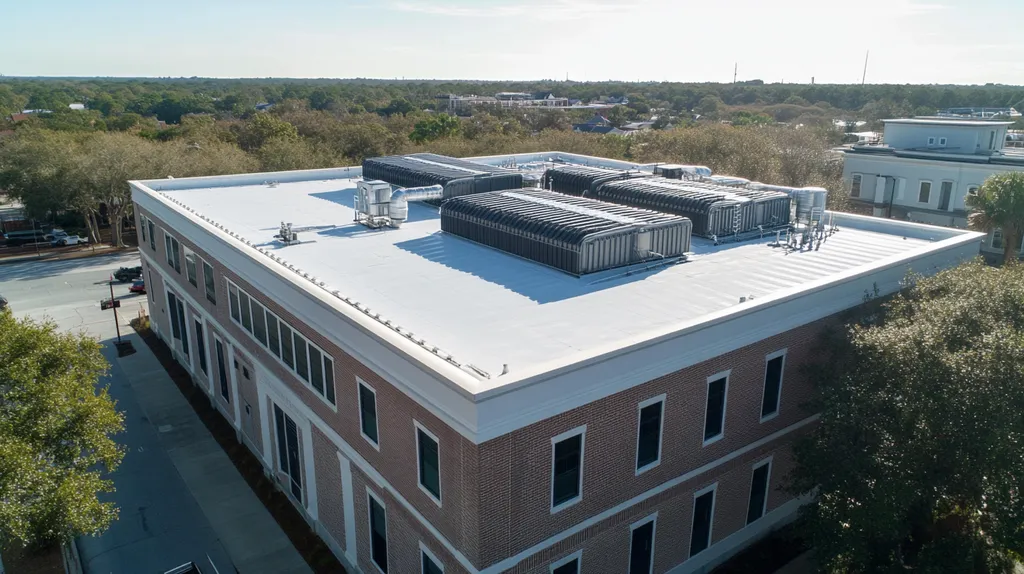Every seven minutes, a worker falls from height, with one-third of these accidents proving fatal. For facility managers, preventing roof edge falls isn’t just about compliance—it’s about saving lives.
The financial impact is equally staggering: a single fall can cost organizations upwards of $250,000 in medical expenses, legal fees, and lost productivity.
This comprehensive guide breaks down the essential components of roof edge fall prevention, from performance factors and financial considerations to compliance requirements and long-term risk management strategies.
SECTION 1: PERFORMANCE FACTORS
When it comes to preventing roof edge falls, every detail matters. Falls are responsible for a staggering 33% of worker fatalities in construction, according to the Occupational Safety and Health Administration (OSHA). For facility managers, recognizing the performance factors that contribute to these risks is vital. This section discusses how to identify high-risk areas, assess roof surface conditions, and evaluate visibility and lighting—all crucial steps in safeguarding your roof and your team.
Identifying High-Risk Areas
Recognizing high-risk areas on a roof is the cornerstone of any fall prevention strategy. Typical locations prone to falls include roof edges, hatches, and skylights, where attention is crucial. Facility managers should conduct regular inspections to uncover these potentially dangerous spots.
Leveraging tools like aerial drones or visual aids can offer an expansive view of the roof’s landscape. Drafting a map of these high-risk zones sets the stage for effective safety measures. It’s beneficial to involve team members in the inspection process, gathering diverse insights on risks.
Installing guardrails or safety barriers around these identified areas can drastically cut down fall risks. Furthermore, ensuring that all staff are aware of these high-risk points is essential for cultivating a culture of safety.
Key Action Items
Assessing Roof Surface Conditions
The condition of the roof surface is a pivotal element in fall prevention. Deterioration or damage can create significant hazards for workers. Therefore, routine evaluations of the roof’s integrity are essential to maintain safety.
Facility managers should keep an eye out for signs of wear and tear such as cracks, loose materials, or uneven surfaces. These factors can easily lead to slips and falls. Prompt repairs mitigate hazards and establish a safer working environment for everyone.
Weather plays a significant role in roof surface safety as well. Heavy rain or snow can turn surfaces slick, escalating fall risks. Creating maintenance schedules aligned with seasonal changes helps ensure that roof surfaces remain safe year-round.
Key Action Items
Evaluating Visibility and Lighting
Visibility and lighting are critical in the fight against roof edge falls. Inadequate lighting can conceal hazards, increasing the likelihood of slips and trips. Facility managers must evaluate their roof’s lighting conditions to create a safer workplace.
Consider performing inspections at different times of day to assess visibility challenges. Installing extra lights in dim areas can greatly improve safety, especially near dangerous roof edges.
Natural light is another essential factor. Keeping skylights clean and unobstructed allows ample sunlight to illuminate work areas effectively. However, it’s vital to ensure safety barriers remain in place to guard against fall risks.
Key Action Items
SECTION 2: FINANCIAL CONSIDERATIONS
Investing in roof edge safety is crucial not only for compliance but also for financial health. The cost of ignoring fall protection can ultimately far exceed the initial expenses associated with safety equipment. With falls accounting for nearly 30% of construction-related fatalities, the potential for significant fines and liabilities looms large. Addressing these challenges upfront not only protects workers but also fortifies a company’s financial standing.
Cost of Fall Protection Equipment
Initially, the expense of fall protection equipment might appear steep, but it’s a critical investment in safety and compliance. Essential gear—like guardrails, safety nets, and personal fall arrest systems—comes in various price ranges, with compliant systems starting around $5,000. Given the potential costs of a fall-related injury, this investment is not just responsible; it’s smart.
Besides safeguarding employees, prioritizing safety demonstrates a company’s commitment to workplace health, enhancing its reputation among clients and partners. Using durable materials can amplify savings, diminishing the need for frequent replacements.
Moreover, financing options from manufacturers can ease the financial burden, allowing businesses to adopt essential safety strategies without draining resources. Treating quality fall protection as a necessary expense helps managers plan their budgets effectively and uphold worker safety.
Key Action Items
Potential Fines and Penalties
Ignoring Occupational Safety and Health Administration (OSHA) regulations can lead to hefty fines, which can stifle a facility’s financial resources. A single violation might result in penalties exceeding $13,000, with repeat offenses potentially costing up to $130,000. These significant fines dent immediate budgets and can tarnish a company’s reputation.
Overlooking fall protection not only increases the risk of financial penalties but also drives up insurance premiums, leading to higher operational costs. Liability claims from injured workers can result in costly legal battles that further strain finances.
Proactively investing in safety can help avoid the financial repercussions of accidents and injuries. Facilities committed to safety are statistically less prone to disruptions, allowing for a more stable operational flow and robust brand image.
Key Action Items
Long-Term Cost Savings
Although the initial costs for roof edge safety measures may be large, the long-term savings highlight the value of these investments. Facilities that implement comprehensive fall protection systems commonly experience reduced liability costs, lower insurance premiums, and less downtime from accidents.
Moreover, a safer workplace enhances employee morale and retention, leading to boosted productivity. When employees feel secure, they’re more engaged and efficient—resulting in a positive ripple effect for the bottom line. Making safety a priority fosters a healthy organizational culture.
Finally, understanding the full cost of ownership for safety equipment—including maintenance and upgrades—can influence better financial decisions. Companies taking a long-term view on safety usually discover they save money over time, highlighting safety’s role as a strategic investment rather than a mere cost.
Key Action Items
SECTION 3: COMPLIANCE REQUIREMENTS
Compliance with roof edge safety regulations is not just a checkbox on a to-do list; it’s an essential element of a safe workplace. The Occupational Safety and Health Administration (OSHA) highlights that falls are among the top causes of workplace injuries and deaths. Meeting these compliance requirements can dramatically reduce the risks linked to roof edge falls. This section will delve into key OSHA regulations, the vital safety systems to implement, and the significance of thorough documentation.
OSHA Regulations Overview
OSHA has laid out specific standards focused on preventing falls, particularly in construction and industrial environments. Employers are required to provide appropriate fall protection for workers at heights, outlined in OSHA standard 1926.501. This regulation specifies when fall protection is mandatory and which safety measures must be employed.
Essential safety measures include guardrails, safety nets, and personal fall arrest systems, particularly at elevated roof edges. Compliance not only minimizes fall risks but also shields employers from potential fines and liability claims due to unsafe working conditions.
OSHA actively conducts inspections to enforce adherence to these regulations, underscoring the need for facility managers to prioritize compliance. Knowing these regulations ensures that roofs are safe and legally compliant.
Key Action Items
Mandatory Safety Systems
Putting mandatory safety systems in place is a game-changer for fall prevention. Under OSHA regulations, key systems like guardrails and safety nets are required. These guardrails must be installed at all roof edges to act as a strong physical barrier against falls.
A personal fall arrest system is also crucial, as it provides employees with harnesses that connect to sturdy roof points. It’s essential to conduct regular inspections and maintenance of these systems to keep them functional and reliable.
In addition, facility managers should consider installing safety monitoring systems—dedicated personnel who oversee safety protocols and ensure compliance with fall protection measures on-site. Training employees on how to use these systems effectively nurtures a strong safety-first culture.
Key Action Items
Documentation and Record Keeping
Thorough documentation and record-keeping are vital for OSHA compliance. Facility managers should keep detailed records of safety inspections, training sessions, and compliance audits. This documentation acts as proof of adherence to safety standards and is invaluable during an OSHA audit.
Records should detail inspection dates, descriptions of findings, and corrective actions taken. Maintaining comprehensive logs showcases the organization’s commitment to safety and transparency.
Additionally, creating a routine for reviewing and updating safety protocols is crucial. This proactive strategy ensures that changes in regulations or advancements in technology are promptly reflected in safety practices.
A well-organized documentation system not only satisfies compliance but also strengthens the organization’s overall safety culture, significantly lowering the risk of workplace accidents.
Key Action Items
SECTION 4: RISK MANAGEMENT
Roof edge falls pose a serious threat in commercial and industrial settings, causing countless injuries and tragic fatalities each year, as highlighted by OSHA. Addressing these risks isn’t just a regulatory requirement; it’s essential for fostering a safe working environment. By implementing thorough assessments, effective hazard mitigation, and strong training programs, facility managers can significantly enhance workplace safety and reduce legal liabilities.
Conducting Site Hazard Assessments
Every risk management plan begins with a robust site hazard assessment, particularly at rooftop edges. This critical step allows facility managers to identify fall hazards related to design, surrounding terrain, and weather conditions. During these evaluations, it’s vital to catalog edge features such as parapets, guardrails, and any existing safety measures.
Engaging a qualified safety professional ensures assessments are comprehensive and compliant with local regulations. Regularly scheduled assessments are essential to adapt to any changes in the work environment. By documenting findings and tackling identified hazards, managers can significantly lower the chances of falls.
Incorporating advanced tools like drones and specialized software can also enhance the precision of these assessments. This data not only facilitates better planning but also underpins proactive safety strategies. Ultimately, thorough assessments lay the groundwork for effective risk management and informed decision-making.
Key Action Items
Mitigating Fall Hazards
Once hazards are pinpointed, it’s time to put effective mitigation strategies in place. Installing permanent edge protection systems such as guardrails and safety nets is fundamental. These protective measures are not just compliance mandates but crucial first lines of defense against falls.
For roofs with unique challenges, investing in enhanced safety solutions like dedicated walkways can minimize risks by funneling foot traffic away from edges. Placing clear warning signs and visual reminders is also essential to keep safety top of mind for workers.
Moreover, regular maintenance of all safety systems cannot be overstated. Frequent inspections ensure that protective installations function correctly and remain reliable. By actively addressing fall hazards, facility managers create a much safer workplace.
Key Action Items
Training and Awareness Programs
Training and awareness are cornerstone elements of effective risk management strategies. Facility managers should design engaging training sessions to instruct employees about the risks associated with roof edge falls. Mixing theoretical knowledge with hands-on demonstrations of safety equipment usage maximizes learning impact.
Ongoing education is crucial to stay proactive about safety. Regular refresher courses help reinforce key practices and ensure that employees are updated on safety protocols, contributing to better compliance and heightened awareness. When staff members feel informed, they are more likely to prioritize safety on the job.
Additionally, cultivating a culture that encourages safety discussions empowers employees to speak up about unsafe conditions or practices. Establishing open channels of communication on safety can lead to timely interventions and long-lasting improvements. Awareness programs transform every worker into a vital participant in sustaining a safe work environment.
Key Action Items
SECTION 5: OPERATIONAL PROCEDURES
Every year, falls from roofs result in serious injuries and fatalities, which makes it essential for facility managers to implement effective operational procedures. By establishing the right protocols, these dangerous incidents can be significantly reduced. Guardrails, personal fall arrest systems, and regular safety equipment maintenance are key elements in fostering a safer working environment. This section dives into these critical measures, highlighting the importance and strategies for successful implementation.
Installing Guardrail Systems
Installing guardrail systems around the perimeter of a roof is an essential safeguard against falls. These barriers not only provide a protective physical barrier but also contribute to a safe environment where workers can perform tasks effectively. Regulatory standards typically dictate the height and durability of these guardrails, ensuring they can withstand potential fall forces.
Well-designed guardrails can be installed with minimal disturbance to daily operations, strategically placed in areas where employees frequently access the rooftops. This proactive approach ensures constant protection during regular activities.
Regular inspections and maintenance of guardrail systems are crucial for sustained safety. Frequent checks help confirm that guardrails remain sturdy, secure, and compliant with safety standards. Any evidence of wear or damage demands immediate repairs or replacements.
Key Action Items
Using Personal Fall Arrest Systems
Personal fall arrest systems (PFAS) are essential for protecting workers in high-risk areas. These setups, which include harnesses, lanyards, and anchor points, secure employees and minimize the distance they could potentially fall. When properly used, PFAS can significantly lower the likelihood of serious injuries.
Training is critical for ensuring effective use of PFAS. Workers must learn how to correctly wear and utilize their harnesses and lanyards. Regular training sessions bolster safety awareness and prepare workers to react appropriately in risky situations.
Choosing the right PFAS is also vital. Facility managers should assess the specific demands of their rooftops, opting for systems that provide robust protection tailored to the height and typical conditions of the work environment.
Key Action Items
Maintaining Safety Equipment
Regular maintenance of safety equipment plays an indispensable role in fall prevention strategies. This encompasses not only guardrail systems and PFAS but also other tools like ladders and scaffolding. Routine inspections are necessary to ensure that all equipment remains functional and safe for use.
Documenting maintenance schedules is critical for compliance and accountability. Facility managers should maintain detailed records of inspections, repairs, and replacements. This diligence safeguards against liabilities and assists in adhering to safety standards.
In addition to physical inspections, it’s important for facility managers to provide training refreshers regarding the proper use of safety equipment. Keeping safety protocols central during employee training sessions ensures that complacency does not set in.
Key Action Items
SECTION 5: OPERATIONAL PROCEDURES
Every year, falls from roofs lead to serious injuries and even fatalities, underscoring the critical need for facility managers to implement robust operational procedures. With the right protocols in place, the risk of these dangerous incidents can be dramatically reduced. This section explores essential measures—guardrails, personal fall arrest systems, and regular safety equipment maintenance—highlighting their significance and effective implementation strategies.
Installing Guardrail Systems
Installing guardrail systems around a roof’s edge forms a crucial line of defense against falls. These barriers serve not only as physical protection but also foster an environment where employees can safely perform their tasks. Regulatory guidelines specify the required height and strength of guardrails, ensuring they can withstand potential fall impacts.
Well-placed guardrails can be installed without disrupting day-to-day operations. It’s important to position them in frequently accessed areas, so workers remain protected even during routine activities. Regular inspections and thorough maintenance are vital to ensure guardrails remain secure, intact, and fully compliant with safety standards. Any signs of wear or damage should prompt immediate repairs or replacements.
Facility managers can also enhance the aesthetic appeal of guardrail systems. Modern designs can integrate seamlessly with the building’s look, ensuring that safety measures don’t compromise visual appeal.
Key Action Items
Using Personal Fall Arrest Systems
Personal fall arrest systems (PFAS) are essential for minimizing the risk of falls, especially in elevated work areas. These systems include harnesses, lanyards, and secure anchor points that keep workers safe and limit the fall distance. When properly utilized, PFAS can significantly reduce the risk of severe injuries.
Comprehensive training on PFAS use is critical. Employees need to master the correct way to wear and utilize their harnesses and lanyards. Regular training sessions will increase safety awareness and help workers respond effectively during dangerous situations.
Choosing the appropriate PFAS tailored to the specific roof conditions is also paramount. Facility managers should assess roof height and potential exposure to environmental elements to select the best protective systems.
Lastly, rigorous pre-use inspections of PFAS equipment are essential. Ensuring all components are functioning correctly and free from damage should be standard protocol. Defective equipment must be removed from service immediately.
Key Action Items
Maintaining Safety Equipment
Consistent maintenance of safety equipment is a cornerstone of effective fall prevention. This includes guardrails, PFAS, ladders, and scaffolding—all essential tools that must be regularly inspected to ensure they remain safe for use.
Documenting maintenance schedules is vital for both compliance and accountability. Facility managers should keep thorough records of inspections, repairs, and equipment replacements to mitigate potential liabilities and ensure adherence to safety protocols.
Additionally, managers should provide training refreshers on the proper use and upkeep of safety equipment. Keeping safety procedures in focus during training can prevent complacency and highlight the importance of equipment maintenance.
Investing in the upkeep of safety equipment not only protects employees but also contributes to operational efficiency. A secure workplace boosts employee morale and productivity, fostering a positive culture that values safety above all.
Key Action Items
The Bottom Line
With 36,338 fatal falls occurring in the workplace from 1982 to 2015, roof edge safety remains a critical priority for facility managers nationwide.
The financial stakes are equally sobering: a single workplace fall can lead to costs exceeding $250,000 in medical expenses, legal fees, and lost productivity.
By implementing comprehensive safety measures – from proper guardrail systems to robust training programs – facility managers can dramatically reduce these risks while ensuring OSHA compliance.
The most successful safety programs combine physical safeguards, clear documentation, and regular training to create a culture where fall prevention becomes second nature.
Remember: when it comes to roof edge falls, prevention isn’t just about avoiding accidents – it’s about protecting lives and securing your facility’s future.
FREQUENTLY ASKED QUESTIONS
Q. How can I identify high-risk areas on my commercial roof?
A. Start by conducting regular inspections to spot potential danger zones, such as roof edges, skylights, and hatches. Utilizing tools like aerial drones can help in getting a comprehensive view of the roof. Dock your findings with a detailed map to ensure that everyone on your team is familiar with these risky spots!
Q. What financial risks do facility managers face ignoring industrial roof safety?
A. Ignoring safety can lead to substantial fines from OSHA, insurance premiums, and legal liabilities from worker injuries. A single violation may result in fines exceeding $13,000, with repeat offenses costing up to $130,000. Investing in safety upfront helps to avoid these hefty costs and stabilizes the company’s financial outlook.
Q. What OSHA regulations should I know for my commercial roof?
A. Familiarize yourself with OSHA standard 1926.501, which details when fall protection is mandatory. It highlights necessary safety measures like guardrails and personal fall arrest systems that must be employed to ensure worker safety at heights. Compliance with these regulations protects your staff and safeguards your business from potential fines!
Q. Why is conducting site hazard assessments crucial for safety?
A. Site hazard assessments help identify fall risks related to design, terrain, and environmental factors. By cataloging existing safety measures like guardrails, you can gauge effectiveness and address gaps. Regular assessments keep your roof safer and comply with regulations, ensuring your workspace is secure from potential hazards.
Q. How can guardrail systems improve industrial roof safety?
A. Guardrail systems create a robust physical barrier that prevents falls from roof edges. When installed correctly, they allow workers to perform their tasks with reduced concerns about accidentally falling. Regular maintenance ensures their continued efficacy, making them a crucial part of any safety strategy for commercial roofs.
Q. Why are personal fall arrest systems important for rooftop workers?
A. Personal fall arrest systems (PFAS) reduce fall distances and minimize injury risks during rooftop work. By employing harnesses, lanyards, and secure anchor points, workers are actively safeguarded against potential falls. Training on correct usage is vital to ensure employees are prepared and know how to leverage this equipment effectively!
Q. What procedures should we implement for maintaining safety equipment?
A. Establish a regular maintenance schedule for all safety equipment, including guardrails and PFAS. Conduct thorough inspections and document repairs to track equipment health. Refresher training ensures everyone understands how to use equipment properly, reducing the risk of incidents due to faulty tools.

